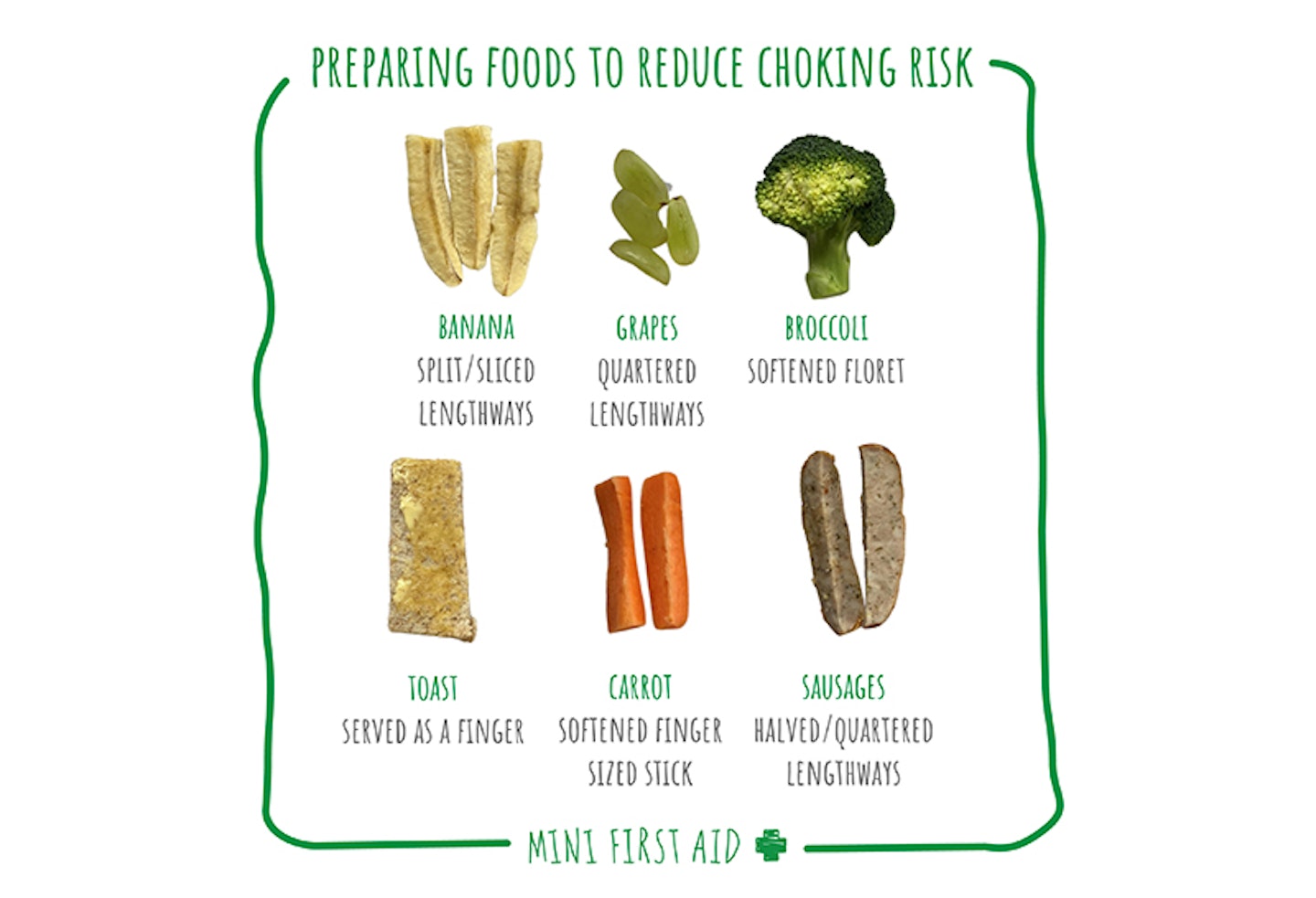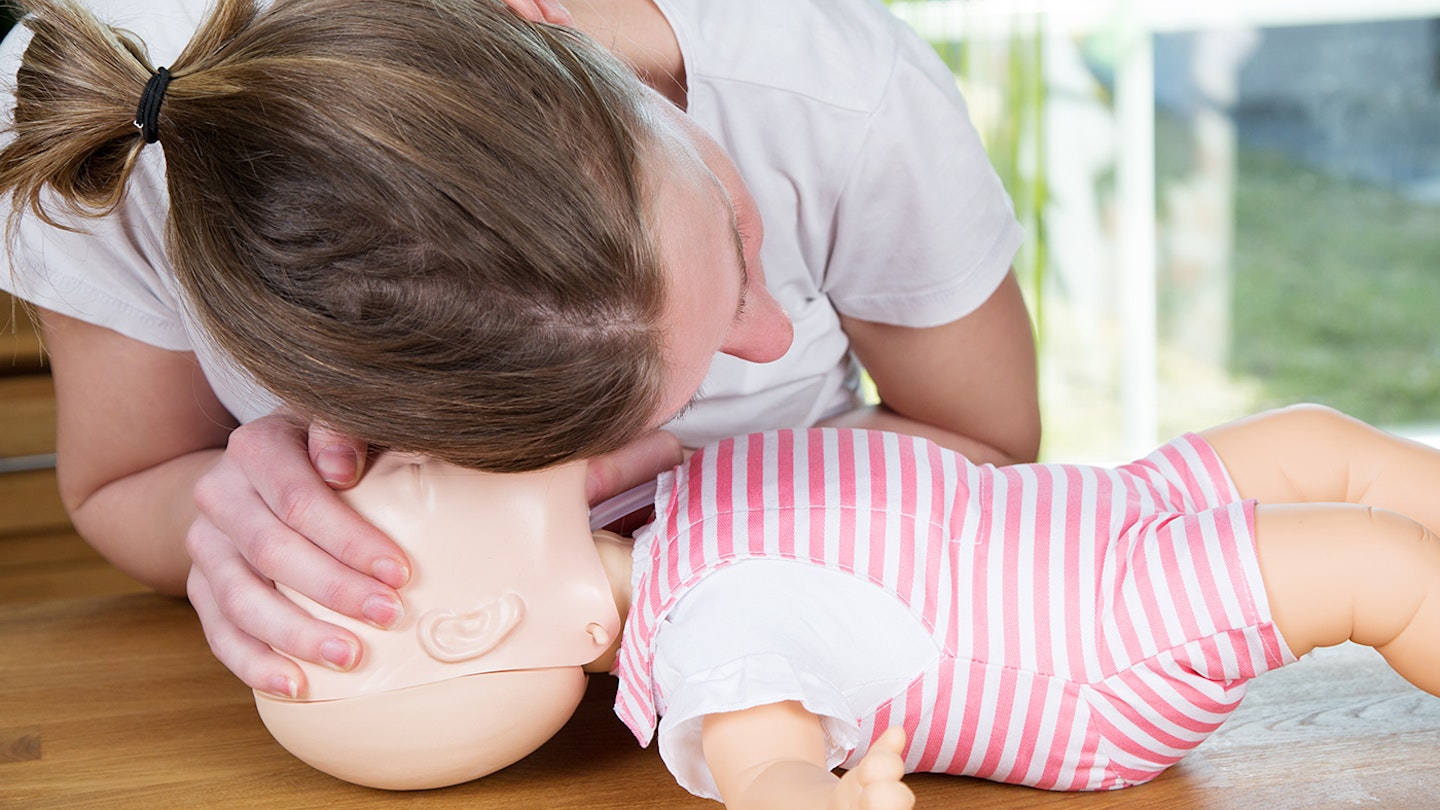Learning the basics of first aid could help your baby or toddler – not to mention any other children in your life – in an emergency situation. As well as the simpler things like how to take a baby's temperature, knowing a few skills such as what to do if your baby or toddler is choking, or how to give a baby CPR saves lives. Here are some tips to get you started.
Why parents should learn first aid
It's scary to imagine anything happening to your baby or toddler, and sometimes it feels easiest to bury your head in the sand. But in just a couple of hours you can pick up some essential first aid skills that could make all the difference to your confidence.
"One thing I hear all the time from parents is: 'I want peace of mind – if something happens I want to be able to fix my child'. Many report feelings of anxiety, but most problems are either unlikely or easy to treat as long as you know how," says Kate Ball, the founder of Mini First Aid, an award-winning company offering first aid classes aimed at parents and care-givers across the UK.
As well as peace of mind, being able to automatically treat injuries and illness on the spot has real advantages: "The difference in outcome varies significantly based on how children are first treated," says Kate. "Even things like burns, if you know to keep them under running water for 20 minutes, the chances of healing and avoiding infection are much better. There are generally between eight and 12 minutes between calling 999 and getting an ambulance, and you need to be able to stay in control of the situation."
What to do if your child is choking
When it comes to parental worries, choking scores highly: "Seven out of 10 parents say it's their biggest fear," says Kate. "But so much of it is down to how food is cut up and cooked."
Aim to cut finger food into long shapes over round ones (think carrot batons), make sure to half or even quarter things like grapes, and always sit with young children while they eat.
The below infographic shows some common baby-led weaning finger foods and how to prepare them safely:

It's also important to recognise the difference between choking and gagging. Babies have a strong gag reflex and it's natural for some coughing and spluttering especially during weaning. If they have a red face and are making noise, it's probably ok - just keep an eye on them. If they turn purple, are unable to cough or go quiet, that is likely to mean they're choking and will require you to intervene.
Step by step guide to baby choking
1 Slap it out. If the baby cannot breathe, cry, or cough, they may be choking and you will need to give five back blows. Lay the baby face down along your forearm and thigh, making sure you support their head and neck. Give five sharp back blows between the shoulder blades with the heel of your hand.
2 Turn them over on your thigh and check their mouth. Pick out any obvious obstructions you can see with your fingertips. Do not sweep the mouth as this could push the object further down the throat.
3 Squeeze it out. If back blows fail to clear obstruction, give five chest thrusts with your baby facing upwards, making sure you’re supporting their head and neck. Put two fingers in the centre of their chest just below the nipple line and give five sharp chest thrusts. Check their mouth again, each time.
The below video demonstrates what to do if your baby is choking:
This video explains what to do if your child is choking:
When to call 999
In a scary situation, it's all about prioritisation. "I always say breathing is the most important thing - if they're bleeding or have a broken bone your reaction might be to go to that first, but if they aren't breathing you must ring 999," says Kate.
"You know your baby, and if they aren't behaving as normal, seek help. Bypass your GP and go straight to hospital. No one is going to tell you off, so err on the side of caution. With things like meningitis, parents often say they just knew or had a gut feeling." Most bleeding or any burns, meanwhile, will require a trip to A&E.
If your child is choking and you can't clear the obstruction, call 999 or 112 for emergency help. Take the baby with you to make the call. Keep repeating five back blows and five chest thrusts until help arrives, checking their mouth each time. If the baby becomes unresponsive at any point, prepare to start baby CPR.
What to do if your baby or toddler is unconscious
It's every parents' worst nightmare, but discovering your child is unconscious is thankfully an unlikely problem. That said, it's definitely worth knowing what to do, for peace of mind.
Follow the DRABC rule – that is, check first for danger, response, airway, breathing and circulation.
1 Danger means assessing that you are safe to approach them – you can't help your child if you get hurt yourself.
2 Response means checking to see if they are conscious, by gently shaking them, tapping their foot, and asking loudly 'are you alright?'
3 Airway means checking their airway is open and clear of blockages.
4 Breathing means checking if they are breathing, and if not, performing CPR.
5. Circulation can be checked once any life-threatening breathing problems have been ruled out. This means ruling out heart problems and severe bleeding (you can use any old fabric to try to reduce bleeding – even an old tea towel will do), before moving on to less urgent problems like broken bones, supporting them with cushions to try and relieve pressure.
How to perform CPR on a baby
If your child is under one year old, there is a particular technique to CPR, as described and demonstrated below:
1 After you have performed a primary survey, if you find that the baby is unresponsive and not breathing, you should ask a helper to call 999 or 112 for emergency help while you start CPR. If you're on your own, you need to give one minute of CPR before calling on a speakerphone. Do not leave the baby to make the call.
2 Start CPR. Place them on a firm surface and open their airway. To do this, place one hand on their forehead and very gently tilt their head back. With your other hand, use your fingertip and gently lift the chin.
3 Give five initial puffs*. Take a breath and put your mouth around the baby’s mouth and nose to make a seal, and blow gently and steadily for up to one second. The chest should rise. Remove your mouth and watch the chest fall. That’s one rescue breath, or puff. Do this five times. If their chest doesn't rise, check the airway is open.
*It is vital that you perform rescue breaths as cardiac arrest in a baby is likely caused by a respiratory problem.
4 You will then need to give 30 pumps. Put two fingers in the centre of the baby’s chest and push down a third of the depth of the chest. Release the pressure allowing the chest to come back up. Repeat this 30 times at a rate of 100 to 120 pumps per minute. The beat of the song ‘Nellie the Elephant’ can help you keep the right rate.
5 After 30 pumps, open the airway and give two puffs. Keep alternating 30 pumps with two puffs (30:2) until emergency help arrives and takes over, or the baby starts showing signs of life and starts to breathe normally.
6 If the baby shows signs of becoming responsive, such as, coughing, opening their eyes, making a noise, or starts to breathe normally, put them in the recovery position. Monitor their level of response and prepare to give CPR again if necessary.
The video below demonstrates the baby CPR technique:
How to perform CPR on a child
How to spot meningitis in children
Meningitis is a bacterial or viral infection that requires urgent medical attention. "The main thing is to be quick acting," says Kate. "Parents sometimes wait for a rash, but that is often the last thing to appear." If you're worried, call 111 for further medical advice, but if there are signs of meningitis call 999 or go straight to A&E.
Look out for:
- A high temperature (although less commonly they could also have a low temperature)
- If they seem floppy or lethargic
- If they don't seem lucid
- If they have a severe headache
- Nausea and vomiting
- If they have a rapid heartbeat
- If they have a dislike of bright lights
What's a febrile seizure and what causes it?
Febrile seizures look a bit like epileptic fits, but are actually a relatively common response in young children to a temperature spike caused by infections.
While your natural urge will likely be to scoop up your child and hold them, the priority is making the space around them safe (especially protecting their head) and helping them to cool down by undressing them as much as possible.
You should also call 999 for emergency help, and monitor their airway and breathing until help arrives.
How to deal with a burn
Even when we're super careful around children, burns can happen – whether from a spilt mug of coffee, touching a hot pan or curiosity around hair straighteners.
- The main thing to do is immediately get the burned area under cold running water for 20 minutes (but make sure to keep the rest of their body warm while you do this)..
- Remove any jewellery and loose clothing gently, apart from anything that's stuck to the burn.
- Don't forget to take off their nappy if there's any chance the burn could be under there, especially for liquid burns as nappies are, of course, designed to hold and absorb liquids and could be concealing hot fluid.
-Don't apply lotions to a burn, they can make things worse.
- Cover the burn with a dressing that won't stick, such as cling film
- Always seek medical attention for children with any size of burn.
Here's a video which helps explain what to do with burns:
